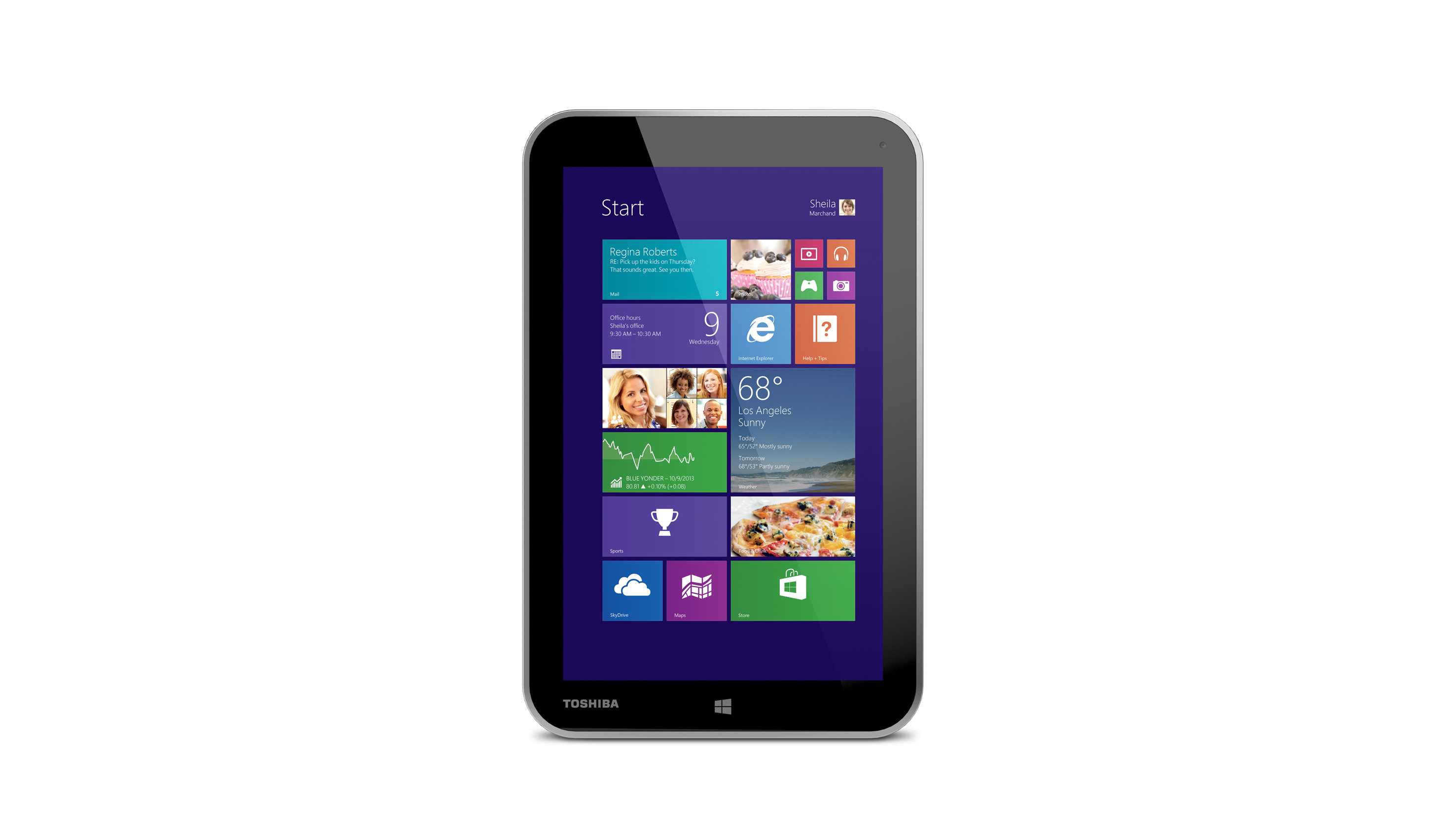TechRadar Verdict
What could have been a nice handheld 8-inch tablet is also held back by a bulky design that makes it look and feel cheap.
Pros
- +
Decent screen
- +
Fair price
- +
Good processor
Cons
- -
Poor performance in desktop mode
- -
Looks cheap
- -
Occasionally crashes
Why you can trust TechRadar
Let's not beat about the bush here; the market that the Toshiba Encore tablet is launching into isn't too healthy at the moment. While sales of tablet PCs themselves are in rude health – the iPad Air and Samsung Galaxy Note 10.1 are doing very well, whilst small-form tablets such as the iPad Mini 2 and the Nexus 7 have also found success. However, while there is good news for Apple and Android devices, Windows 8 tablets – especially ones running Windows RT have been far from successful. Can the Toshiba Encore succeed where others, such as the Lenovo ThinkPad Tablet 2 have failed?
There are a few areas that things look good for the Toshiba Encore – at least on paper. For a start it's one of the new breed of smaller, eight-inch Windows 8 tablets, eschewing the larger, more cumbersome, size of previous Windows 8 tablets, for something more comfortable to hold. It also comes preinstalled with Windows 8.1, Microsoft's update that fixed a number of problems, and addressed a number of complaints, that were levelled at Windows 8 when it first launched. It's also important to note that the Toshiba Encore comes with Windows 8.1 and not Windows 8.1 RT.
What this means is that the Encore comes with an Intel Atom Quad Core processor, and can run legacy Windows programs (unlike Windows 8.1 RT, which can only run Windows 8 apps). This gives the tablet a bit more power, and far more flexibility, though it does mean that battery life won't be quite as long as ARM-based tablets. The battery trade off in return for more functionality is a tricky balance that Windows 8 tablets struggle to get right – so it will be interesting to see if Toshiba has judged it correctly with the Encore.
With Sony recently announcing that it's pulling out of the Windows-based PC market, and Microsoft's own trouble shifting its Surface tablets, attention will surely turn to any manufacturer that can make a truly successful Windows 8 tablet. Will Toshiba strike gold with the Encore, or will it be just another noble failure that simply couldn't compete with its iOs and Android opponents? Let's take a look.
Specifications
Quite possibly the biggest draw of the Toshiba Encore is its eight-inch screen. While sometimes bigger can often mean better, seven and eight-inch tablets have been diligently carving out a healthy niche for people who want a screen that's bigger than a phone, and yet still easy and comfortable to carry around. The size of the Toshiba Encore means that it can be held reasonably comfortably in one hand, though the large bezel around the screen, and slightly bulky depth to the machine, means it's not quite as light as it could be.
It also means the Toshiba Encore misses out on a premium look and feel as well, and instead brings to mind the various budget Android tablets we've tested in the past. The 8-inch screen is decent, but with only 1280 x 800 it lacks the clarity and sharpness of a full 1080p display – and is certainly no match for the iPad's high-resolution Retina display. Still, it does the job, displaying web pages and online video pretty well, and it also has decent viewing angles.

The processor in the Toshiba Encore is an Intel Atom Z3740, clocked at 1.33GHz. The latest version of Intel's mobile Atom chips, the Z3740 is based on Intel's new Bay Trail (http://www.techradar.com/news/computing/why-intel-s-bay-trail-is-the-next-big-thing-in-mobile-computing-1181901) 22nm architecture. These new chips are the closest Intel has come to combining power (they're quad-core with twice the speed of previous chips, and three times the graphics power) with mobility – less heat is produced, so the device they are in can be smaller, as well has having longer battery life.
As well as being the first quad-core Atom processors Intel has produced, the integrated graphics of the Z3740 support a maximum resolution of 2560 x 1600. Pretty impressive, especially when compared to the previous generation of Atom CPUs (Clover Trail), which could only achieve 1366 x 768. This means that, at least on paper, the Toshiba Encore's graphics performance is actually held back by the low resolution of the screen, rather than the onboard graphics – a reversal of what we see in many tablets – especially budget ones.
Alongside the processor we get 2GB of RAM, a 64GB hard drive, Bluetooth, wireless N, GPS and two webcams (one on the front, and one on the back). While these specs won't set the world on fire, depending on what you want to use the Toshiba Encore for, they should be enough.

Matt is TechRadar's Managing Editor for Core Tech, looking after computing and mobile technology. Having written for a number of publications such as PC Plus, PC Format, T3 and Linux Format, there's no aspect of technology that Matt isn't passionate about, especially computing and PC gaming. He’s personally reviewed and used most of the laptops in our best laptops guide - and since joining TechRadar in 2014, he's reviewed over 250 laptops and computing accessories personally.
